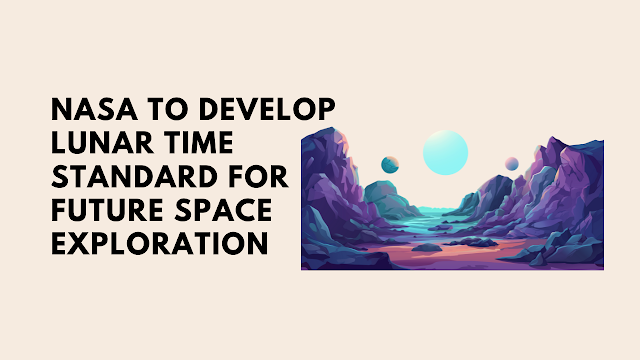In a groundbreaking move set to advance our understanding of space travel, NASA is embarking on an initiative to establish a Coordinated Lunar Time (LTC). This ambitious project follows a policy directive from the White House and aims to create a standardized time system for the Moon, which will play a crucial role in the future of lunar exploration and beyond.
NASA’s Lunar Time Initiative
As part of its ongoing efforts to enhance space exploration, NASA today announced that it will coordinate with U.S. government stakeholders, international partners, and standards organizations to develop the LTC. This new time standard will be essential for managing the timing and coordination of activities in a growing lunar ecosystem, with potential scalability to other celestial bodies in our solar system.
The Coordinated Lunar Time will be determined using a weighted average of atomic clocks placed on the Moon, much like how Earth’s Coordinated Universal Time (UTC) is calculated. However, challenges arise due to the Moon’s unique environment. Initial analyses suggest that atomic clocks on the lunar surface will measure time slightly differently, ticking faster by microseconds per day. To address this, NASA and its partners are exploring mathematical models to establish the most accurate lunar time.
Why Lunar Time Matters
The precision required in establishing lunar time is highlighted by its impact on space travel. For example, a difference of 56 microseconds—a fraction of a second—can equate to a spatial discrepancy equivalent to approximately 168 football fields for objects moving at the speed of light. This tiny yet significant difference underscores the importance of accurate timekeeping in space exploration. Cheryl Gramling, NASA’s lead on lunar position, navigation, timing, and standards, emphasizes that without compensating for these effects, space travelers could experience significant miscalculations in their positions.
Impact on Future Missions
With NASA’s Artemis campaign preparing to establish a sustained presence on and around the Moon, this lunar time standard is vital for ensuring the safety and efficiency of future missions. The ability to precisely coordinate time will be crucial for both crewed and uncrewed missions, as well as for the commercial space industry, which is rapidly expanding its presence in lunar exploration. Dr. Ben Ashman, navigation lead for lunar relay development at NASA, notes that a standardized time system is essential for safe and resilient operations as more nations and private entities engage in lunar activities.
Expanding Horizons
NASA’s Space Communication and Navigation (SCaN) program, which oversees this initiative, plays a crucial role in the agency’s space communications operations. SCaN supports over 100 missions, including those involving the International Space Station and upcoming Artemis missions. As the commercial space industry grows, the need for precise and standardized time systems will only become more critical. This project will also set the stage for similar time standards for Mars and other celestial bodies, facilitating long-duration exploration missions.
Connecting to Recent Discoveries
In addition to these advancements, NASA’s recent discoveries in space continue to captivate the world. From exploring the depths of our solar system to understanding new phenomena, NASA remains at the forefront of space exploration. For the latest updates and breaking news on NASA’s endeavors, including recent discoveries in space, stay tuned to NASA’s updates and breaking news today.
As we look to the future, it’s clear that NASA’s efforts are paving the way for a new era of space exploration. Whether it’s establishing new time standards or making recent discoveries in space, NASA is leading the charge in pushing the boundaries of human knowledge and capability.
For those interested in other aspects of Kourtney Kardashian’s ventures, such as the latest from Lemme by Kourtney Kardashian or Poosh vitamins, there are plenty of exciting updates in wellness and health to explore as well.
Stay informed and engaged with NASA’s latest news and discoveries as we continue to explore the universe and push the limits of what’s possible.






.png)
.png)
.png)
.png)
0 Comments